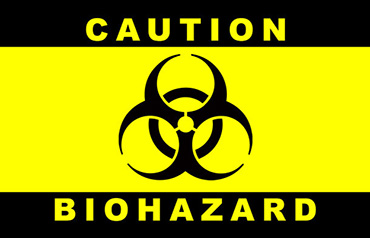
Ronald R. Cherry
Airborne transmission of Ebola
By Ronald R. Cherry

Many people have been mis-informed regarding human to human transmission of Ebola. The Canadian Health Dept. States that airborne transmission of Ebola is strongly suspected and the CDC admits that Ebola can be transmitted in situations where there is no physical contact between people, i.e.: via airborne inhalation into the lungs or into the eyes where individuals are separated by 3 feet. That helps explain why 81 doctors, nurses and other healthcare workers have died in West Africa to date. These courageous health care providers use careful CDC level barrier precautions such as gowns, gloves and head cover, but it appears they have inadequate respiratory and eye protection. Dr. Michael V. Callahan, an infectious disease specialist at Massachusetts General Hospital who has worked in Africa during Ebola outbreaks said that minimum CDC level precautions "led to the infection of my nurses and physician co-workers who came in contact with body fluids."
Currently the CDC advises health care workers to use goggles and simple face masks for respiratory and eye protection, and a fitted N-95 mask during aerosol-generating medical procedures. Since so many doctors and nurses are dying in West Africa, it is clear that this level of protection is inadequate. Full face respirators with P-100 replacement filters would provide greater airway and eye protection, and I believe this would save the lives of many doctors, nurses and others who come into close contact with, or in proximity to, Ebola victims.
It is apparent that the primary mode of person to person Ebola transmission is through direct contact with the body or body fluids of Ebola victims, but it is unwise to ignore the airborne mode. I believe the current evidence supports healthcare workers using a higher level of airway and eye protection than is currently recommended. Since CDC level respiratory/eye precautions for Ebola are inadequate for healthcare workers in West Africa, I assume they will also be inadequate in the United States.
© Ronald R. Cherry
August 18, 2014

Many people have been mis-informed regarding human to human transmission of Ebola. The Canadian Health Dept. States that airborne transmission of Ebola is strongly suspected and the CDC admits that Ebola can be transmitted in situations where there is no physical contact between people, i.e.: via airborne inhalation into the lungs or into the eyes where individuals are separated by 3 feet. That helps explain why 81 doctors, nurses and other healthcare workers have died in West Africa to date. These courageous health care providers use careful CDC level barrier precautions such as gowns, gloves and head cover, but it appears they have inadequate respiratory and eye protection. Dr. Michael V. Callahan, an infectious disease specialist at Massachusetts General Hospital who has worked in Africa during Ebola outbreaks said that minimum CDC level precautions "led to the infection of my nurses and physician co-workers who came in contact with body fluids."
Currently the CDC advises health care workers to use goggles and simple face masks for respiratory and eye protection, and a fitted N-95 mask during aerosol-generating medical procedures. Since so many doctors and nurses are dying in West Africa, it is clear that this level of protection is inadequate. Full face respirators with P-100 replacement filters would provide greater airway and eye protection, and I believe this would save the lives of many doctors, nurses and others who come into close contact with, or in proximity to, Ebola victims.
It is apparent that the primary mode of person to person Ebola transmission is through direct contact with the body or body fluids of Ebola victims, but it is unwise to ignore the airborne mode. I believe the current evidence supports healthcare workers using a higher level of airway and eye protection than is currently recommended. Since CDC level respiratory/eye precautions for Ebola are inadequate for healthcare workers in West Africa, I assume they will also be inadequate in the United States.
© Ronald R. Cherry
The views expressed by RenewAmerica columnists are their own and do not necessarily reflect the position of RenewAmerica or its affiliates.
(See RenewAmerica's publishing standards.)


















